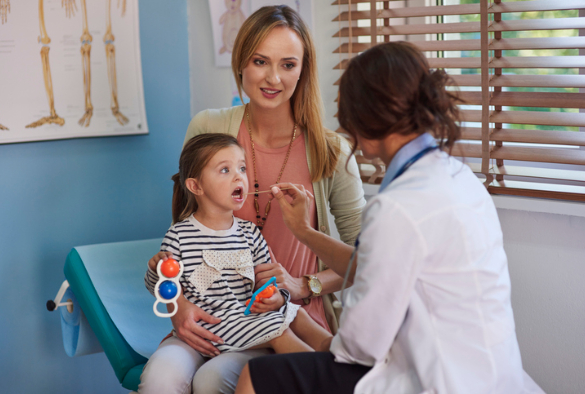Integrating GPs into children’s emergency departments for non-urgent cases can reduce waiting times, inpatient admissions and healthcare costs, but at the expense of increased antibiotic prescribing, a new Liverpool study has found.
In the current context of rising demand for children’s emergency services, the findings provide preliminary support for the development of ‘GP in ED’ models of care, provided that they are accompanied by antimicrobial stewardship initiatives.
The total number of visits to emergency departments (EDs) in England exceeded 24 million in 2018, an increase of 40% in the past decade. In children, increased concern regarding the potential severity of conditions, parental anxiety, and a perceived need for urgent treatment, make emergency attendance more likely, and it is estimated that about half of all attendances for acute paediatric care, could feasibly be managed in the community.
The co-location of GPs in paediatric emergency care settings has previously been shown to improve clinical and process outcomes and patient satisfaction. Whether doing so was cost-effective however, remained unclear.
Published today in the British Journal of General Practice, this large, retrospective observational study explored 13,000 non-urgent presentations in a paediatric emergency department with a co-located GP service in North West England over a two-year period.
The study found that being managed by GPs instead of ED staff resulted in 18.4% lower treatment costs, fewer hospital admissions, and fewer patients exceeding the 4-hour waiting
target; however, those seen by GPs were subject to higher rates of antimicrobial
prescribing. The researchers caution that further research is required to determine causality between GP management and these outcomes.
First author Simon Leigh, a PhD Student at University of Liverpool’s Institute of Infection, Veterinary, and Ecological Sciences said: “The study shows real potential for alternative models of providing care in emergency departments. Provided that measures can be established to mitigate the increases in antimicrobial prescribing among those treated by the GP group, this model of care should result in significant benefit to patients, parents and the health service.”
Professor Enitan Carrol, Chair of Paediatric Infection at the University of Liverpool, who co-led the study, said: “This study builds on our previous findings in a six-month pilot scheme of this initiative assessing clinical and process outcomes. The co-location of GPs in a tertiary centre ED aligns with the NHS England and NHS Improvement Strategy of building strong and effective integrated care systems (ICS) across England. Our study demonstrates benefits of joining up the provision of services in co-located partnerships.
“Antimicrobial stewardship initiatives in primary care have been successful in reducing antibiotic use in routine practice, so coupled with reduced implementation costs, should make the intervention easily scalable.”
Professor Louis Niessen, Chair of Health Economics at the Liverpool School of Tropical Medicine, who co-led the study and leads the new Liverpool Centre for Global Health Economics, said: “Our study of day-to-day ED practice shows substantial room for improvements in economic, clinical, and patient-centred terms of a very common andimportant childhood condition. It shows the positive impact of roles for GP, not just for the NHS, but in many other comparable country settings.”
Research reference:
Management of non-urgent paediatric emergency department attendances by GPs: a retrospective observational study, Br J Gen Pract 2020; DOI: https://doi.org/10.3399/bjgp20X713885
